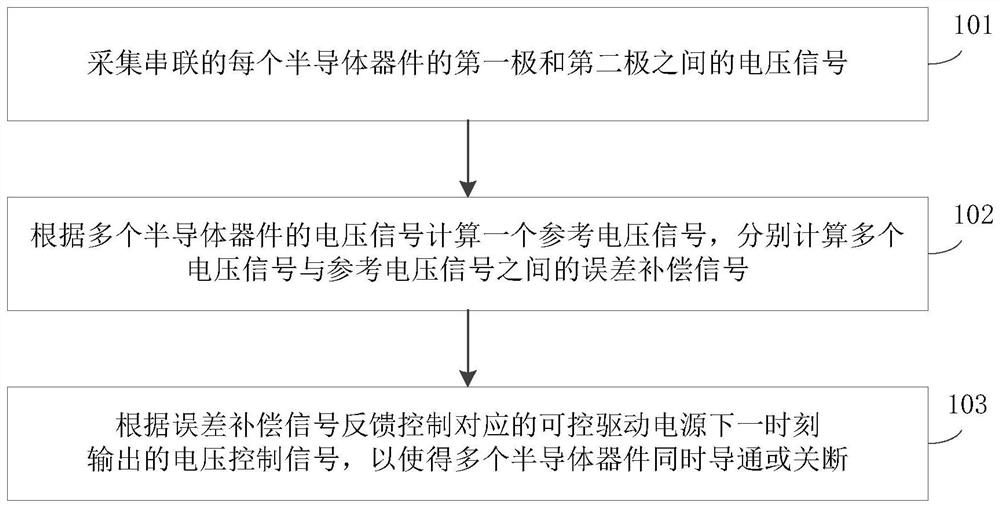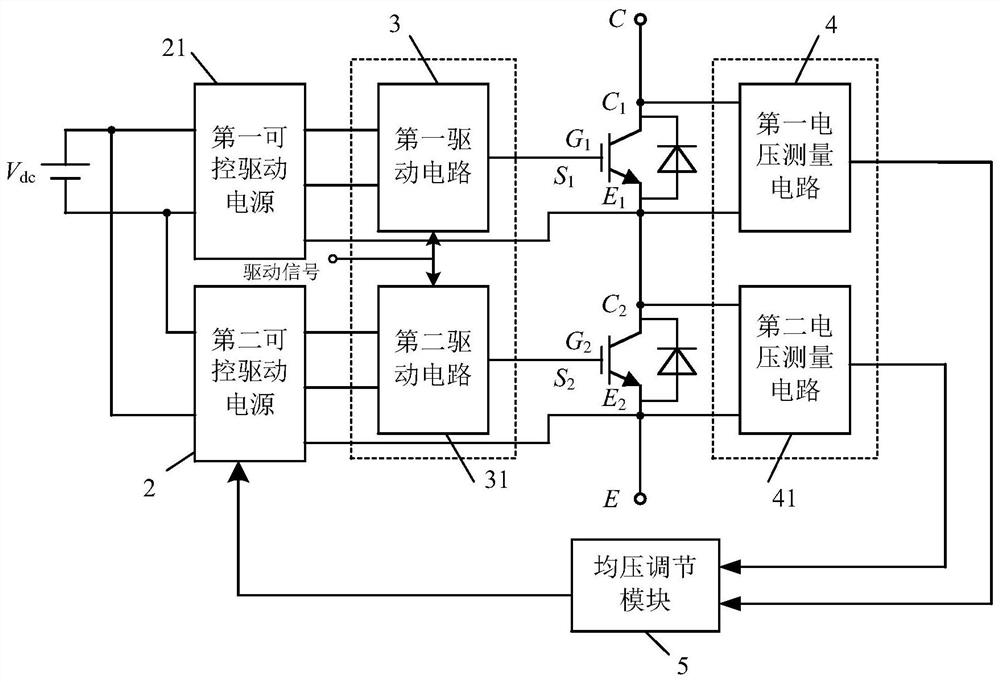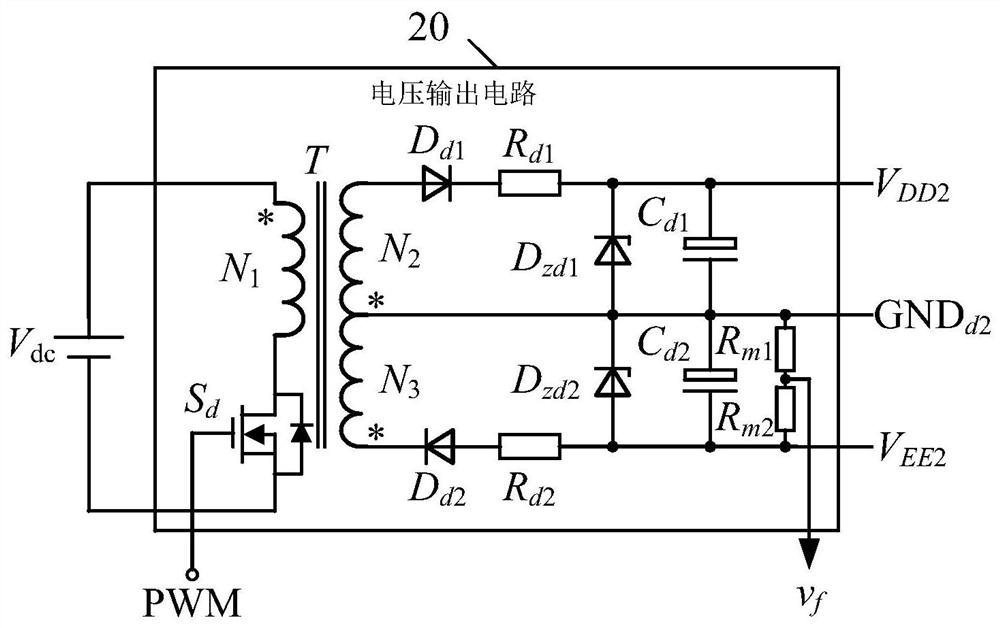A voltage-controlled semiconductor device series voltage equalization method and voltage equalization circuit
A voltage control type, series voltage equalization technology, applied in the field of power electronics, can solve the problems of uncontrollable voltage, increased switching speed, high power loss, etc., to achieve good voltage equalization effect, small power loss, and reduce stray parameters. Introduced effects
- Summary
- Abstract
- Description
- Claims
- Application Information
AI Technical Summary
Problems solved by technology
Method used
Image
Examples
Embodiment 1
[0045] Please refer to figure 1 , this embodiment provides a voltage equalization method for a voltage-controlled semiconductor device in series, which includes:
[0046] Step 101: Collect the voltage signal between the first pole and the second pole of each semiconductor device connected in series to obtain a plurality of voltage signals, generally including at least two semiconductor devices connected in series, where “multiple” refers to a lot in two;
[0047] Step 102: Calculate a reference voltage signal according to the voltage signals of the plurality of semiconductor devices, and respectively calculate the error compensation signal between the plurality of voltage signals and the reference voltage signal;
[0048] Step 103: Feedback control the voltage control signal output by the corresponding controllable driving power supply at the next moment according to the error compensation signal, so that the plurality of semiconductor devices are turned on or off at the same...
Embodiment 2
[0058] This embodiment provides a series voltage equalization circuit of a voltage control type semiconductor device, which includes a plurality of controllable driving power sources, a plurality of voltage measurement circuits, a plurality of driving circuits, and at least one voltage equalization adjustment module.
[0059] Wherein, the plurality of voltage measurement circuits are respectively used to measure the voltage signals between the first poles and the second poles of the plurality of semiconductor devices. Semiconductor devices connected in series generally use voltage equalizing resistors to achieve static voltage equalization. Each voltage equalizing resistor is connected in parallel between the first pole and the second pole of the semiconductor device. By measuring the current of the static voltage equalizing circuit of the semiconductor device, the corresponding voltage is obtained through processing. voltage signal. For example, in this embodiment, the voltag...
Embodiment 3
[0066] In this embodiment, a semiconductor group formed by two semiconductor devices connected in series is used as an example to describe the specific circuit structure. figure 2, this embodiment provides a semiconductor device series voltage equalization circuit, the circuit includes two voltage measurement circuits (respectively, a first voltage measurement circuit 4 and a second voltage measurement circuit 41), a voltage equalization adjustment module 5, two adjustable voltage measurement circuits A controllable driving power supply (respectively the first controllable driving power supply 21 and the second controllable driving power supply 2) and two driving circuits (respectively the first driving circuit 3 and the second driving circuit 31), the semiconductor device of this embodiment can be For SiC IGBT tube.
[0067] The series-connected power semiconductor device group in this embodiment includes a first semiconductor device tube S 1 and the second semiconductor de...
PUM
 Login to View More
Login to View More Abstract
Description
Claims
Application Information
 Login to View More
Login to View More - R&D
- Intellectual Property
- Life Sciences
- Materials
- Tech Scout
- Unparalleled Data Quality
- Higher Quality Content
- 60% Fewer Hallucinations
Browse by: Latest US Patents, China's latest patents, Technical Efficacy Thesaurus, Application Domain, Technology Topic, Popular Technical Reports.
© 2025 PatSnap. All rights reserved.Legal|Privacy policy|Modern Slavery Act Transparency Statement|Sitemap|About US| Contact US: help@patsnap.com



